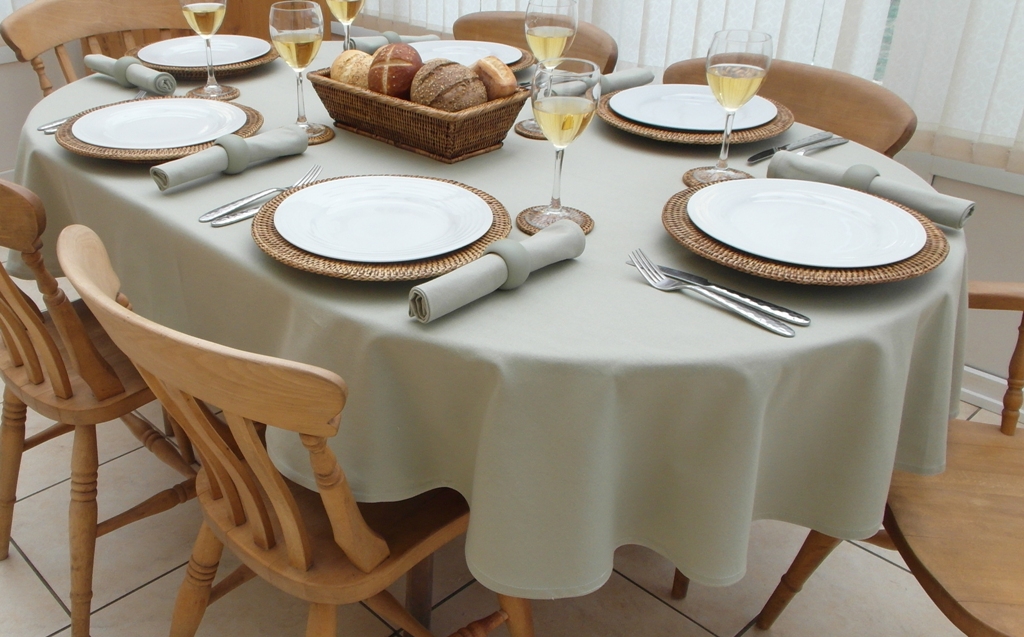Maintenance of table covers saves your furniture and keeps them durable. Table covers save surfaces from spills, stains, scratches, and wear. This way, it keeps tables in good condition for longer. Regular cleaning and care of the table cover saves them from discolouration or damage, saving unnecessary replacement costs. It can also keep dining or outdoor areas neat and presentable. A picnic table cover is a great investment for your outdoor table, protecting it from general wear and tear. Therefore, table covers can protect and add style to everyday meals and special occasions.
How to care for and maintain your table covers
Table covers are not placed to provide a good look and shield to your furniture, so they may need some protection, including beautification, for your homes. Each will always make care and treatment necessary for their well-being and prolong their life. Thus, you can lengthen the look and viability of your table covers by just following some easy tips:
1. Regular Cleaning and Washing:
Tablecloths should be washed frequently. Otherwise, they become spotted, dusty, and dirty. Based on how often you use it or the type of material used, you might have to wash the cover weekly or after every use. Most fabric covers, like linen or cotton tabletop covers, can be washed in the washing machine in warm water, although some need special care. In addition to washing, stains should be treated promptly whenever possible. For spills of food items or drinks, the application should be made by blotting the stain with a clean cloth instead of rubbing it.
2. Proper Drying Techniques:
After washing, following the right drying method is always necessary to retain the fabric’s quality. Some table covers can be tumble-dried on a low-heat setting, and others might require air drying to avoid shrinkage or damage. Natural fabrics like linen or cotton are best in air drying. Avoid placing the table cover under direct sunlight, as this might make colours fade with time. Proper drying of your table cover will help maintain its shape, texture, and colour. Iron, if needed, your table cover after drying, using the heat setting according to the fabric. Always check the label to confirm the correct heat setting to avoid damaging the material.
3. Avoiding Excessive Wear and Tear:
The table covers are always subjected to wear and tear because they are used almost all the time. They may be put on the dining table or tables outside that are being frequently used. Because of wear reasons, it is a good idea to regularly rotate your table cover so that it doesn’t bear concentrated pressure or strain in one particular area. This is especially important if the cover is used for special occasions where heavy dishes or decor may cause stress on the fabric. Also, do not set hot objects on the table cover while serving because heat can burn the material. Using trivets or placemats under hot dishes protects the cover from heat damage.
4. Store Your Table Covers Properly:
Proper storage is as equally important as cleaning when maintaining your table covers. If you will not use your table cover for a while, storing it in a cool and dry place is best. Avoid storing it in an area with a lot of moisture as it may be inviting mould or mildew on the cloth covers. You can keep your cover in a breathable cloth bag to avoid dust and dirt while still being able to breathe. Before storing, make sure your table cover is completely clean and dry. For more fragile materials, you can wrap the cover with tissue paper to help hold the shape.
5. Repairing and Maintenance of Damaged Table Covers:
Even with the most cautious care, sometimes table covers will still incur minor tears and other damages. Once the table cover acquires a small hole, tear, or loose seam, you should repair it to avoid further damage. Moreover, you can do this by hand yourself or take it to a professional seamstress if you are unsure how to fix it. In such cases, it’s best to find a professional who can help with the repair work for covers with embroidered or other complicated designs. For more serious damage, such as when it fades due to repeated washing or sun exposure, fabric dye or some stain removal technique might be another option.
Final words
Finally, the table cover must be cared for to increase its lifetime and freshness. Routine cleaning does the job, while the light wash with quick stain treatments can help retain the best quality of this product. Also, wear and tear could be avoided if protection, like a table pad, is utilized. Likewise, daybed covers need care for them to look great and be comfortable, adding to your living with very little effort. Always follow specific fabric recommendations in order to obtain the best results.
You may also like to read:
Beyond Aesthetics: How House Extensions Can Improve Your Quality of Life




